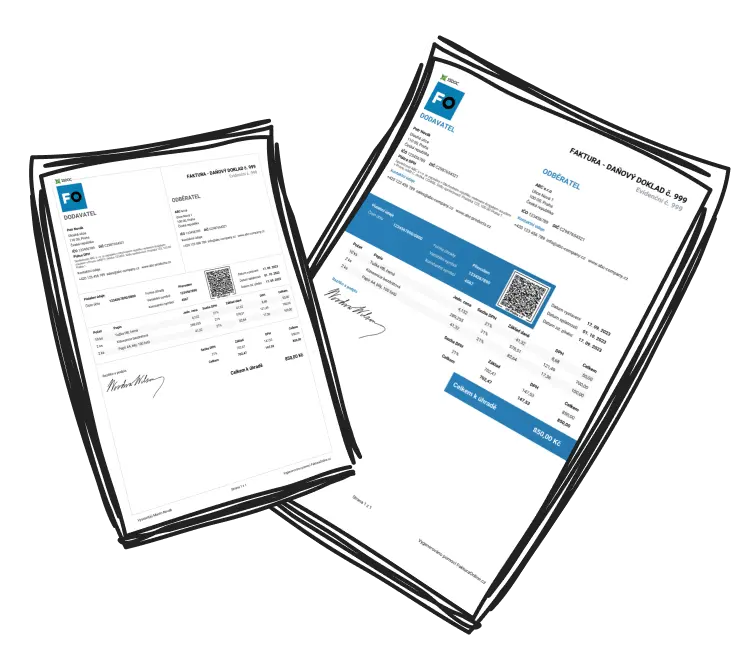To address what is invoicing, it can be described as the formal process of requesting payment for goods or services provided. It serves as both a legal record and a financial management tool, documenting transaction details for clarity and ensuring cash flow stability. Essentially, invoices promote transparency between businesses and clients, keeping operations professional and organized for smoother financial management.
What is Invoicing?
Understanding what is invoicing starts with knowing it is a professional request for payment and a legal tool to track and manage finances.

Why Knowing What is Invoicing Matters for Your Business Success?
When considering what is invoicing, it's clear that it's more than just paperwork—it directly impacts your business's professionalism, financial health, and legal compliance. Proper invoicing ensures timely and accurate payments, helping businesses avoid financial disruptions while building client trust. Additionally, clear invoices help maintain organized records for taxes and audits, protecting the business from potential legal disputes.

Example
Without proper invoicing, businesses risk delayed payments, making it harder to pay employees or suppliers on time. On the other hand, a well-structured invoice makes payment seamless, improving cash flow and client relationships.
Why What is Invoicing is Important:
Ensures a steady cash flow.
Builds professionalism and trust with clients.
Necessary for tax compliance and financial tracking.
Prevents disputes by clearly outlining payment details.
Encourages on-time payments, strengthening client relations.
How Knowing What is Invoicing Helps Create Effective Invoices
Understanding what is invoicing leads to a clear, professional, and easily understood invoice. Follow these steps to ensure your invoices are accurate and effective:
Use invoicing software or templates to maintain professionalism.
Add your business name, logo, and contact details at the top.
Assign a unique invoice number and include the issue date and due date.
Include the customer’s name and contact information.
List the items or services provided in a table, detailing descriptions, quantities, and rates.
Calculate totals clearly, showing taxes or discounts separately.
Add payment instructions (e.g., bank details, payment methods).
Double-check the invoice for accuracy before sending it.
What is an Invoice Number?
An invoice number is a unique identifier to track the invoice and avoid confusion during disputes or follow-ups.

Essential Elements to Enhance Your Understanding of What is Invoicing
An effective invoice includes all critical details to ensure professionalism, legal compliance, and faster payment processing. Here are the essential elements to include:
Business and Contact Information: Your company name, logo, address, email, and phone number.
Customer Details: Client’s name, company, and contact information.
Invoice Number and Dates: A unique invoice ID, the issue date, and the payment deadline.
Itemized List of Services/Products: List items with descriptions, quantities, rates, and subtotals.
Taxes and Fees: Specify any applicable taxes or extra charges.
Total Payment Due: Clearly mention the total amount, including all calculations.
Payment Terms: State methods accepted (e.g., credit card, PayPal) and late payment policies.
Additional Notes: Add a thank-you note or customer service details to build rapport.

Tip
Double-check that your invoice is aligned with your local tax compliance laws before sending it to clients.
Easy Ways to Improve Your Invoicing Process
A streamlined invoicing process can save you time and prevent errors. Here are some actionable tips:
Use invoicing software: Tools like QuickBooks or Wave automate invoices and speed up payment tracking.
Automate recurring invoices: For long-term clients, set automated generation and delivery of invoices.
Send invoices immediately: Don’t delay—send invoices as soon as services or products are delivered.
Follow up professionally: Remind clients about overdue invoices using polite, professional communication.
Digitize your process: Accept online payments like PayPal or credit cards to make transactions easier.
Keep organized records: Digitally store all invoices for effortless retrieval during tax season or audits.
Review your process regularly: Identify inefficiencies and adjust to improve speed and accuracy.

Example
Wave app offers free invoicing tools that simplify the process and integrate directly with payment platforms, making it easier for clients to pay you promptly.
By grasping what is invoicing, you can ensure your business stays financially organized, fosters trust with clients, and operates smoothly for long-term success.

